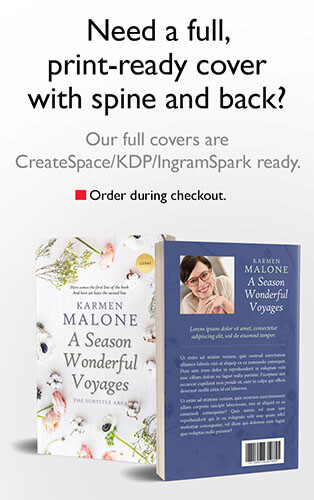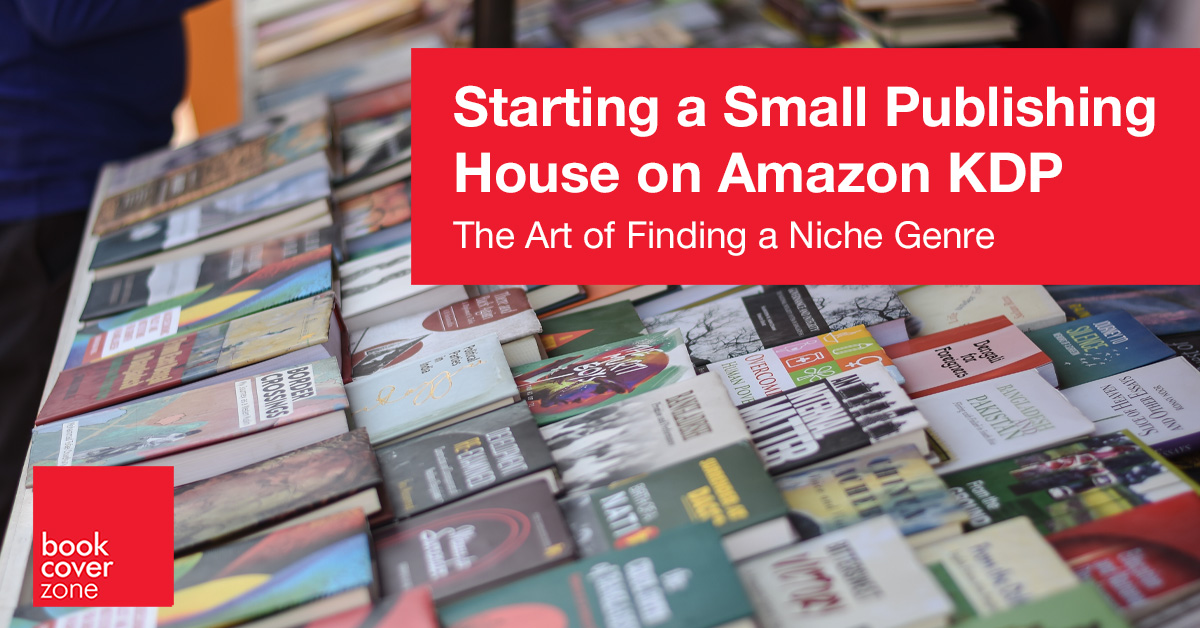Establishing a small publishing house on Amazon Kindle Direct Publishing (KDP) can be an exciting venture for aspiring publishers and authors alike. However, before you dive into the publishing world, there are several crucial factors to consider that can significantly impact your success. Here’s a guide to help you navigate the setup process and make informed decisions.
- Identify Your Niche and Genre
The first step in setting up your publishing house is to decide which niche or genre you want to focus on. This is important for several reasons:
Aim for niche genres or even sub- (or even sub-sub-) genres: The first step in setting up your publishing house is to decide which niche or genre you want to focus on. This is important for several reasons. While it may be tempting to target very popular genres such as romance, thriller, or fantasy, focusing on more specific, niche markets can often lead to better results. Niche markets cater to specific interests, allowing you to attract a dedicated audience that is highly engaged with that particular genre. For instance, instead of publishing a general romance novel, consider focusing on “historical romance” or “paranormal romance.” These specific sub-genres often have passionate readers who are actively seeking new titles within them. A targeted approach enables you to differentiate your offerings and establish your brand in a less saturated market. In popular genres, competition is intense, making it harder for new authors to gain visibility. Conversely, by focusing on niche areas, you can cultivate a loyal readership that trusts your publishing house for quality content in that genre. This can lead to higher sales and more consistent readership, as niche audiences are often willing to follow authors and publishers that speak directly to their interests.
What are sub-genres?
“Subgenres are specific categories within a broader genre, allowing for more precise classification of literary works. For example, historical fiction immerses readers in a particular historical period, combining accurate historical events with fictional characters and plots, while cozy mystery features amateur sleuths solving crimes in a charming, often small-town setting, with minimal violence and a focus on character development. Science fiction often includes subgenres like cyberpunk, which emphasizes futuristic technology and a dystopian society, and space opera, where grand adventures unfold in space with expansive world-building. Romantic suspense merges romance with thriller elements, often involving love stories entwined with a mystery or crime that adds tension. Similarly, fantasy encompasses subgenres such as epic fantasy, which features expansive worlds and complex storylines with elements like magic and mythical creatures, and urban fantasy, where fantastical elements are integrated into a contemporary urban setting. Each of these subgenres allows authors to target specific reader interests while offering unique thematic and narrative experiences.“
Do a Thorough Market Research: Performing specific, targeted market research on a sub-genre is crucial for any author or publisher aiming for success in today’s competitive literary landscape. This focused research helps you understand the unique preferences, trends, and reader expectations that define a niche market. However, this task can be challenging due to the vast array of genres and sub-genres, each with its own readership dynamics and competition. The intricacies of consumer psychology, coupled with the rapid evolution of market trends, demand that you invest significant time and mental energy into thorough research. To do this effectively, begin by immersing yourself in the specific sub-genre through extensive reading, which will help you identify notable themes and popular tropes. Engage with online communities and forums where enthusiasts of your chosen genre gather, as this will provide you with firsthand insights into their desires and feedback on existing works. Utilize keyword research tools to analyze search trends and understand what potential readers are actively seeking. Conduct surveys to gather direct feedback from your target demographic, and attend relevant workshops or literary events to network with fellow writers and industry professionals. By dedicating the necessary time and effort to comprehensive market research, you will position yourself not only to write compelling content but also to strategically market your work, ultimately enhancing your chances of achieving success in your preferred sub-genre. This is by no means a simple task; but it is a task that most aspiring publishers overlook. So if you make the right choices here, you’re suddenly one step ahead in the game.
Passion and Expertise: And finally, choose genres that resonate with your interests and knowledge, as this will make the publishing process more enjoyable and authentic.
- Consistent Design Language
A consistent design language throughout your book covers and promotional materials is essential for establishing brand identity. Here are a few things to consider:
Cover Design: Invest in professional cover designs that are visually appealing and genre-appropriate. A catchy cover can significantly influence purchase decisions, so make it stand out while still being relevant to the genre (feel free to ask us for more details about this!).
Typography and Layout: Use consistent fonts and layout styles across all your publications. This creates a recognizable brand aesthetic that readers will associate with your publishing house (again, we’re here to help, if needed).
Color Schemes: Develop a distinctive color palette that reflects the tone of your books. Consistency in color schemes helps in building familiarity with your brand. However, keep in mind that readership and literature have a spontaneous part to it. So if you suddenly become too “corporate” or too one-dimensional this will only hurt your brand identity. Play around with designs, try different things, but always keep in mind to keep it professional and consistent to some level.
- Crafting Catchy and Compelling Titles
The title of your book plays a crucial role in capturing attention:
Memorable Titles: Now you might not always be in control of the titles of the books you publish. But as a publisher, you will have a say in this. Discuss with the author, if needed; try to convince them of titles that work and those that don’t. In the end, aim for titles that are not only catchy but also give potential readers a glimpse into the story or theme of the book.
Keywords: Keywords and meta tags are crucial in today’s publishing landscape as they significantly enhance the visibility and discoverability of books, especially on platforms like Amazon KDP. These elements allow authors and publishers to optimize their listings for search engines, which is essential for potential readers to find their work in a crowded market. Amazon KDP utilizes these keywords and meta tags to categorize books accurately and determine their ranking in search results and recommendations. Consequently, thoughtful implementation of keywords and meta tags can directly influence your book’s position in Amazon listings, making the difference between being seen and remaining overlooked.
- Finding Authors to Publish
Building a portfolio of authors is vital for the success of your publishing house. Here are effective strategies to find and recruit authors:
Networking: Attend writing workshops, literary festivals, and author events. Networking with writers will help you discover new talent and present your publishing house as a viable option.
Online Communities: Join online writing communities and social media groups where authors share information and seek publishing opportunities. Platforms like Facebook, Reddit, and Twitter have active groups dedicated to writers and publishing.
Call for Submissions: Create a submission page on your website or social media channels where authors can submit their manuscripts. Clearly outline your submission guidelines and the genres you are interested in.
Incentives for New Authors: Consider offering attractive contracts, royalties, or marketing support to entice new writers to publish with you.
- Marketing and Promotion Strategies
Once you have your books ready for publishing, it’s time to think about marketing strategies:
Building an Online Presence: Establish a professional website and active social media accounts to promote your authors and their works. Share engaging content related to writing, publishing, and author insights to build a community around your brand.
Book Launch Strategies: Plan launch events for new titles, including virtual book tours and giveaways, to generate buzz.
Email Marketing: Build an email list to notify readers about new releases, offers, and author news. Provide value to your subscribers through exclusive content.
- Understand Amazon KDP Guidelines
Finally, familiarize yourself with the terms and conditions of Amazon KDP:
Publishing Guidelines: Ensure you adhere to KDP’s publishing guidelines for formats, cover specifications, and copyright.
Royalties and Payments: Understand how royalties work and the payment structures. KDP offers different royalty rates depending on the pricing model you choose.
Amazon ISBN or my own ISBN? Keep in mind that Amazon offers free ISBNs (and barcodes from them) for free. However, you might want to invest in your specific ISBN, as that will allow the books to be officially registered to your publishing house.
In the end, setting up a small publishing house on Amazon KDP is a rewarding endeavor for anyone passionate about literature and storytelling. Whether it will generate revenue or not, is all up to you. But by focusing on your niche, maintaining a consistent design language, crafting catchy titles, finding diverse authors, and employing effective marketing strategies, you can at least get a headstart.







